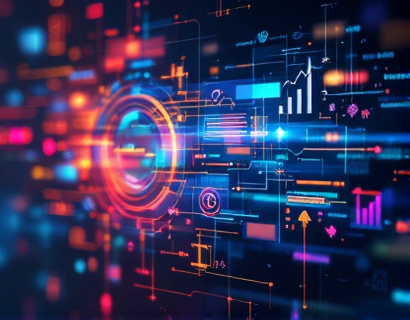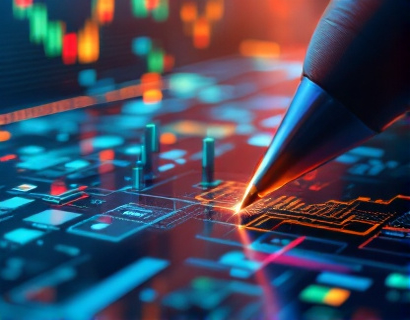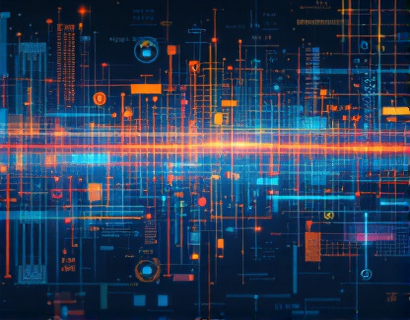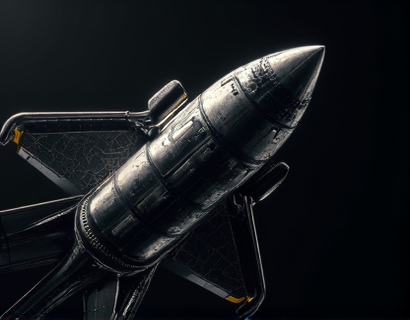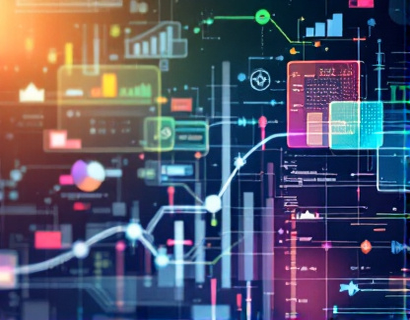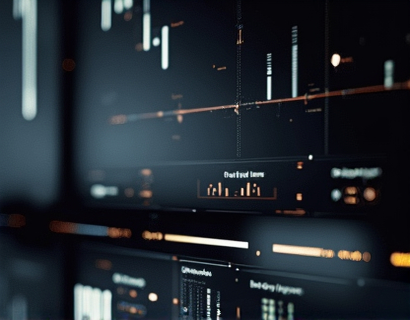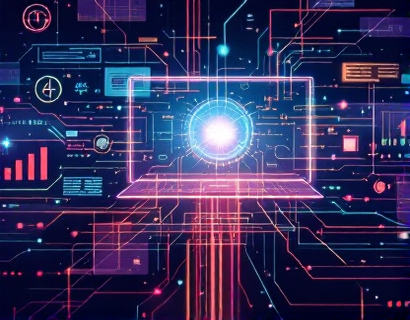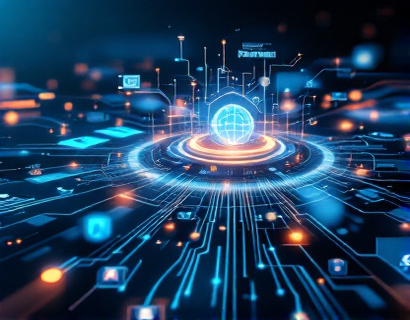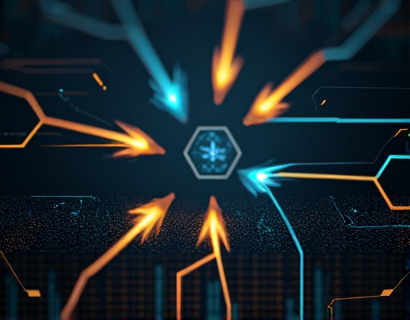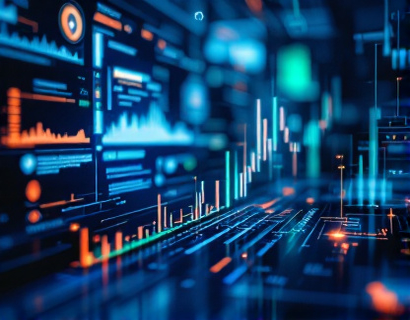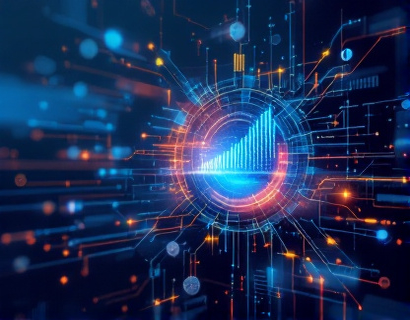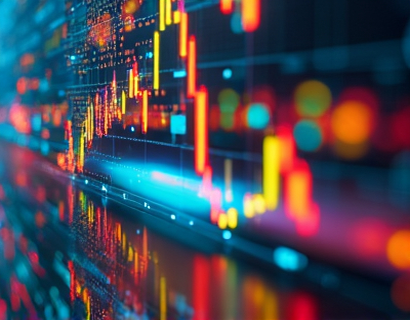Blockchain for Art: Revolutionizing the Preservation and Tracking of Historical Artifacts with Decentralized Solutions
The art world is on the cusp of a transformative era, driven by the integration of blockchain technology. This innovative approach promises to revolutionize the preservation and tracking of historical artifacts and artworks, ensuring their authenticity and provenance are verifiable and secure. By leveraging decentralized solutions, blockchain technology fosters trust and collaboration among collectors, museums, and cultural institutions, safeguarding our shared cultural heritage for future generations.
Blockchain, at its core, is a distributed ledger technology that records transactions across multiple computers in such a way that the registered transactions cannot be altered retroactively. This inherent characteristic makes it an ideal tool for the art world, where the authenticity and provenance of artworks are paramount. Traditional methods of verifying an artwork's history and ownership are often cumbersome, prone to fraud, and lack transparency. Blockchain offers a decentralized, immutable, and transparent alternative.
Verifying Authenticity and Provenance
The authenticity of an artwork is crucial for its value and legitimacy. Blockchain technology can provide an unbreakable chain of custody, documenting every transaction and ownership change since the artwork's creation. Each block in the chain contains a cryptographic hash of the previous block, along with transaction data, making it nearly impossible to alter any part of the record without detection. This ensures that the provenance of an artwork is tamper-proof and verifiable by anyone with access to the blockchain.
For instance, when an artist creates a piece, the blockchain can record the creation date, the artist's signature, and any relevant certificates of authenticity. As the artwork changes hands, each transaction is logged on the blockchain, creating a comprehensive and transparent history. Collectors and institutions can verify the artwork's authenticity by tracing its ownership back to the original creator, reducing the risk of forgeries and fraud.
Enhancing Trust and Collaboration
The art market is often characterized by a lack of trust and transparency, with numerous intermediaries and complex transaction processes. Blockchain technology streamlines these processes, reducing the need for intermediaries and enhancing trust among all parties involved. By providing a transparent and immutable record of transactions, blockchain ensures that all stakeholders, from artists to collectors to museums, can confidently engage in transactions.
Museums and cultural institutions can benefit from blockchain by securely documenting the acquisition and exhibition history of artworks. This not only helps in verifying the authenticity of pieces but also in managing loans and exhibitions more efficiently. For example, a museum can easily track the history of a loaned artwork, ensuring it has not been previously sold or altered in any way that could affect its value or integrity.
Secure Ownership and Transfer
Ownership of artworks is a critical aspect of the art market, and blockchain provides a robust solution for managing and transferring ownership. Smart contracts, self-executing contracts with the terms directly written into code, can automate the transfer of ownership when certain conditions are met. For instance, a smart contract can ensure that payment is released to the seller only after the buyer confirms receipt and verification of the artwork's authenticity.
This automation reduces the risk of disputes and ensures that all parties adhere to the agreed terms. Additionally, blockchain's decentralized nature means that ownership records are not controlled by a single entity, reducing the risk of manipulation or loss of records. Collectors can thus have greater confidence in the security and legitimacy of their investments.
Preservation of Cultural Heritage
The preservation of cultural heritage is a global concern, with many historical artifacts and artworks at risk due to conflict, natural disasters, and inadequate storage conditions. Blockchain technology can play a vital role in preserving this heritage by creating a permanent and accessible record of these items. Digital representations of artifacts can be stored on the blockchain, ensuring they are preserved even if the physical items are lost or damaged.
Moreover, blockchain can facilitate the tracking of artifacts as they are moved for conservation or exhibition purposes. Each movement can be recorded on the blockchain, providing a clear and transparent history of the artifact's location and condition. This not only helps in preventing theft and illegal trafficking but also ensures that artifacts are handled with the utmost care and respect.
Collaboration and Accessibility
Blockchain technology fosters collaboration among various stakeholders in the art world, including collectors, museums, researchers, and cultural institutions. By providing a shared, decentralized platform, blockchain enables these entities to collaborate more effectively, sharing information and resources to advance the preservation and study of art and cultural heritage.
For example, a blockchain-based platform can allow museums to share digital records of their collections, making them accessible to researchers and the public worldwide. This democratization of access can lead to new insights and discoveries, enriching our understanding of history and culture. Additionally, blockchain can facilitate the creation of digital marketplaces where artists and collectors can transact securely and transparently, breaking down geographical and economic barriers.
Challenges and Considerations
While the potential benefits of blockchain in the art world are significant, there are also challenges and considerations that need to be addressed. One major challenge is the scalability and efficiency of blockchain networks. Current blockchain technologies can struggle with high transaction volumes, which is a concern given the potentially large number of transactions in the art market.
Another consideration is the need for standardization. For blockchain to be widely adopted in the art world, there must be standardized protocols and formats for recording and verifying artworks. This includes standards for digital representations, metadata, and smart contracts. Collaboration among industry stakeholders is essential to develop these standards and ensure interoperability across different platforms.
Privacy is also a critical issue. While transparency is a key feature of blockchain, there may be instances where sensitive information needs to be protected. Solutions such as private blockchains or zero-knowledge proofs can be employed to maintain privacy while still ensuring the integrity and verifiability of transactions.
Future Prospects
The integration of blockchain technology in the art world is still in its early stages, but the potential for transformation is immense. As the technology matures and adoption increases, we can expect to see more innovative applications and solutions. For instance, blockchain can be combined with other emerging technologies like the Internet of Things (IoT) and artificial intelligence (AI) to create more sophisticated systems for artifact tracking and preservation.
Moreover, the growing awareness of the importance of cultural heritage and the need to protect it from loss and damage will likely drive further innovation and investment in blockchain solutions for the art world. As more institutions and individuals recognize the benefits of blockchain, we can anticipate a future where the preservation and tracking of historical artifacts and artworks are more secure, transparent, and collaborative than ever before.
In conclusion, blockchain technology offers a revolutionary approach to preserving and tracking historical artifacts and artworks. By ensuring authenticity, enhancing trust, securing ownership, and facilitating collaboration, blockchain can play a pivotal role in safeguarding our cultural heritage for future generations. As the art world embraces this technology, we can look forward to a more transparent, efficient, and secure art market.




